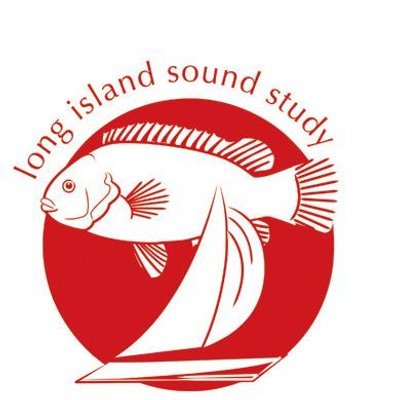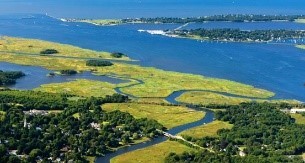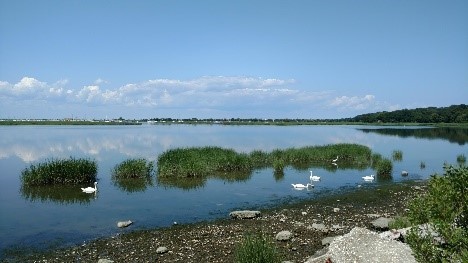Long Island Nitrogen Action Plan - Newsletter
The New York State Department of Environmental Conservation sent this bulletin on 09/06/2019 09:00 AM EDT |
| DEC Delivers - Information to keep you connected and informed from the NYS Department of Environmental Conservation |
| Share or view as a web page || Update preferences or unsubscribe |
Long Island Nitrogen Action Plan (LINAP) - August Newsletter
|
|
In this month’s issue of the LINAP newsletter, we highlight the ongoing nitrogen reduction related initiatives led by our LINAP partners at the Long Island Sound Study.
About the Long Island Sound StudyThe Long Island Sound’s valuable recreational and commercial uses make it one of the most important estuaries in the nation. In March 1988, the Long Island Sound was identified as an Estuary of National Significance and the Long Island Sound Study (LISS) became a part of the United States Environmental Protection Agency's (EPA) National Estuary Program. The LISS is a cooperative effort involving researchers, regulators (EPA, New York State Department of Environmental Conservation, and Connecticut Department of Energy and Environmental Protection), environmental groups, industry and concerned citizens dedicated to restoring and protecting the Long Island Sound. Sound Stats:
Long Island Sound Comprehensive Conservation and Management PlanIn 1994 the LISS developed a Comprehensive Conservation and Management Plan (CCMP) to protect and restore the Long Island Sound. In October 2015, the CCMP was revised to incorporate scientific and technological advances, respond to changing community needs, and address new environmental challenges such as climate change, sustainability, and environmental justice. The revised CCMP seeks to achieve four primary goals:
A copy of the 2015 CCMP can be found here.
Total Maximum Daily Load (TMDL) and the new Nitrogen Reduction StrategyIn 2001, the EPA approved Connecticut’s and New York’s plan, entitled A Total Maximum Daily Load (TMDL) Analysis to Achieve Water Quality Standards for Dissolved Oxygen in Long Island Sound, for achieving 58.5% nitrogen reduction of point and nonpoint source nitrogen loads. As of the end of calendar year 2018, the states had attained the goal for point sources, with upgrades to wastewater treatment plants resulting in an annual reduction of 42 million pounds of nitrogen to the Long Island Sound from peak years in the early 1990s. Assessments show progress in reducing agricultural sources and atmospheric deposition of nitrogen, with more progress needed on urban stormwater, septic systems, and residential turf fertilizer. In 2015, the EPA embarked on a new Long Island Sound Nitrogen Reduction Strategy with a Long Island Sound Futures FundThe Long Island Sound Study initiated the Long Island Sound Futures Fund in 2005 through the EPA’s Long Island Sound Office and the National Fish and Wildlife Foundation. The Long Island Sound Futures Fund supports projects in local communities that aim to protect and restore the Long Island Sound. To date the Futures Fund has invested $17 million in 380 projects. With grantee match of $33 million, the program generated $50 million for locally based conservation. Funding priorities for this program include:
Visit the National Fish and Wildlife Foundation’s Sound Futures Fund Grant web page to find out what projects are eligible, and details on how to apply. For a list of grants awarded click here. Water Quality MonitoringIn partnership with the Connecticut Department of Energy and Environmental Protection, the Interstate Environmental Commission, and the University of Connecticut the LISS conducts an extensive Long Island Sound Water Quality Monitoring Program throughout New York and Connecticut embayments and open water. Testing parameters include water temperature, salinity, dissolved nitrogen, particulate nitrogen, and dissolved oxygen at fixed stations throughout the Sound. LISS also supports a real-time monitoring program using equipment on buoys at stations throughout the Sound, including the Narrows and Western Sound. These data are used to quantify and identify annual trends and differences in various water quality parameters and general conditions of the Long Island Sound waters. Through a new effort, the Unified Waters Study, conducted in partnership with Save the Sound, water quality data are being collected at many of the Sound’s embayments and harbors. This will provide information on nearshore conditions to help understand local water quality impairments.
Advanced Septic System Nitrogen Sensor Challenge, Phase II: Prototype TestingIn 2017, the EPA launched the Advanced Septic System Nitrogen Sensor Challenge, where EPA partnered with The Nature Conservancy, USGS, and others to challenge entrants to design a nitrogen sensor for use in advanced onsite wastewater treatment systems, also known as advanced septic systems, to monitor their long-term performance. On June 29, 2017, EPA hosted the Advanced Septic System Nitrogen Sensor Challenge Showcase Day in New York City where the 1st, 2nd and 3rd place winners of Phase I gave presentations on the design of their proposed sensors. EPA selected Battelle Memorial Institute (Battelle) as the winner to support Phase II: Prototype Testing and the development of a Test/Quality Assurance Plan (T/QAP) and Verification Plan, and to oversee the testing of the sensors. Sensor testing will be completed in 2019 at the Massachusetts Alternative Septic System Test Center (MASSTC), an NSF International certified test facility. Developers are invited to participate in the two one-month no-risk tests offered in October 2018 and January 2019. Each one-month test will include the one-week screening test during the first 7 days. Developers whose sensors meet basic performance goals during the first seven days will be invited to participate in the extensive 6-month field performance test. Battelle will verify the results of the field performance tests based on the protocol. EPA will award reports and statements for sensors that complete the six-month field testing and meet the minimum performance goals. To sign up for the LINAP Newsletter, visit the LINAP webpage or click here. |



